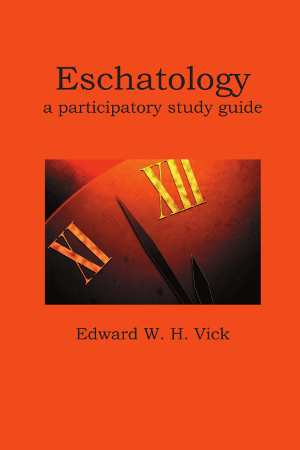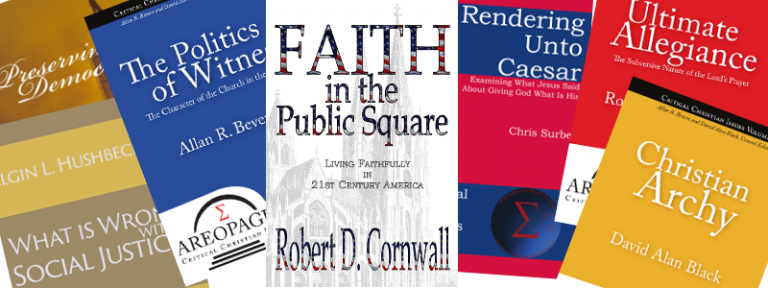Source Criticism
[Note, 3/25/06 — the original post was truncated due to a syntax error I made in the HTML. This is the corrected version.]
(Continuing my series on Biblical criticism, from my last post From Criticism.)
If Form Criticism can properly be called a “tree method” rather than a forest view, Source Criticism might be said to be a “grove method.” It looks at a broader swath of the text than Form Criticism, but still is not looking at the passage as a whole. To see the relationship between these various forms, look at my chart in the pamphlet What is Biblical Criticism?.
Again, I must emphasize that this tool assumes certain stages of the text, that is a point in time when various literary elements were gathered together into larger documents, which were in turn gathered into the larger document that we have before us. In many cases this textual history will not be true. In a prophetic book such as Isaiah, for example, the prophet made certain proclamations of God’s word. These proclamations were then gathered into a larger document. It’s possible that there were a number of larger documents that were smaller than the final book of Isaiah (1-35, 36-39, 40-55, 56-66, for example), though in the case of Isaiah we discover these documents through literary study of the text itself.
In Jeremiah, on the other hand, we have direct internal and external evidence of a process such as would be expected by Source Criticism, and so would be studied by this tool. In Jeremiah 36:4ff, Baruch receives some of Jeremiah’s prophetic oracles and writes them into a book. Note, in addition, that this copy of Jeremiah’s work was destroyed, and then was recreated (Jeremiah 36:32). The individual oracles that Jeremiah dictated would be of the general form of “prophetic oracles” (there are many types of prophetic oracle), and the document that Baruch wrote would constitute one of the source documents of the book of Jeremiah. How do I know this was not the actual book of Jeremiah as we have it today? Because Jeremiah ministered for some years after this incident (see 36:1-3 for dating), and we have a record of those incidents.
Further evidence of sources in Jeremiah comes from the differences between the Septuagint and Masoretic text of the book. I’m not here discussing the differences in length between the two texts, but rather the position of the oracles about foreign nations, which is chapters 46-51 in the Masoretic Text, but is instead located at chapter 26 and following in the LXX. This is not proof that this is a source, but it strongly suggests that we have at least two sources in the book of Jeremiah, one the Baruch scroll, and the second a document containing prophetic oracles against the nations.
In an earlier post I used the parable of the sower as an example of a parable that is attested in three gospels. Having the same form (parable) in three different larger documents helps us to study the nature of the form. The gospels are even more useful as an example of forms in action. There are blocks of text in Matthew, Mark, and Luke that show very close verbal parallels, suggesting some form of copying one from another. The question is what was copied, and who copied whom.
These blocks involve text that is in all three synoptic gospels, some that is in Matthew and Luke, but not Mark, and some that is in Matthew or Luke, but not in any other gospel. The most common explanation for this phenomenon is known as the two source or two document hypothesis. This suggests that Matthew and Luke copied from Mark and an unknown source known as ‘Q’ for ‘Quelle’ which is German for ‘source.’
You can identify various elements in this system using a gospel parallel. Where you find all three gospels in agreement, you are generally dealing with Markan material. When Luke and Matthew agree but Mark does not, you are dealing with Q material, when Matthew or Luke are alone in a reading, they are dealing either with their own independent material, or with further hypothetical sources ‘M’ or ‘L’. There are cases in which this loose equation doesn’t work, for example there are some elements of Q that appear in Mark, or there can be cases where only Luke or Matthew copy Mark. Note also that this is not the only theory of how the gospels were composed. (For related information see Understanding the Search for the Historical Jesus.)
Careful source criticism is useful in understanding the history of the text and how it was composed. It can tell us about the people who were involved in creating the text. It is also a necessary adjunct to redaction criticism, which I will discuss in my next entry on this topic.
There are a couple of dangers in source criticism, however. First, like all critical methods, it often must be based on limited evidence. Speculation added to speculation can get very doubtful. Second, there are cases in which Bible students conclude that they have solved a problem because they have identified the sources.
As an example, Genesis 1:1-2:4a and Genesis 2:4b-25 are normally regarded as coming from two separate sources. There are differences in the way creation is described, and some potential issues in the order of creation. One response is simply to assume that they are different sources, and thus it’s no big deal that they tell a different story. But that is to miss an important element of interpretation. Even if you believe that the two passages come from different sources, someone seems to have thought they fit together. An interpreter must consider also what they mean when combined. Source criticism shouldn’t be used to shortcut a full exegesis of a passage.


